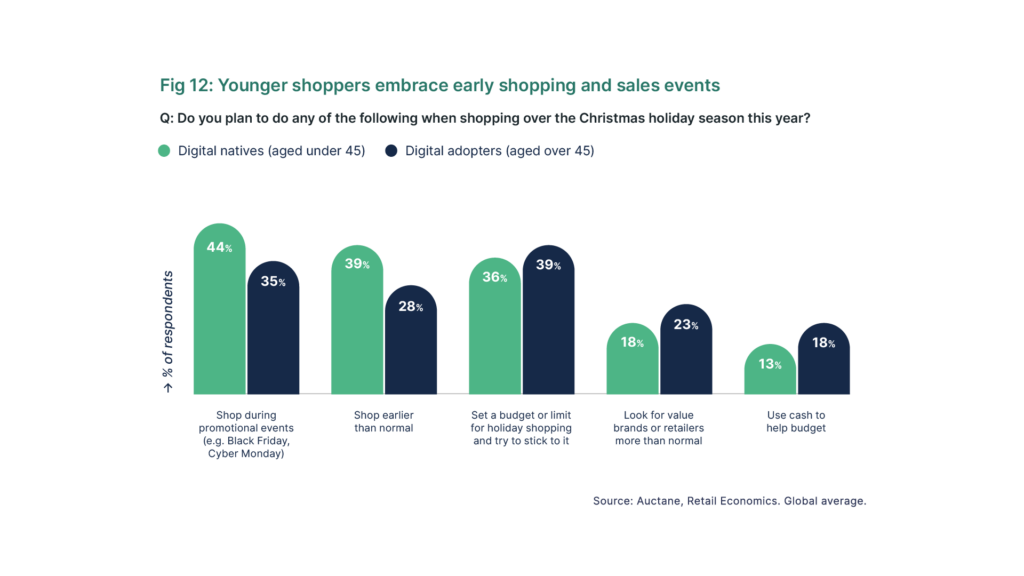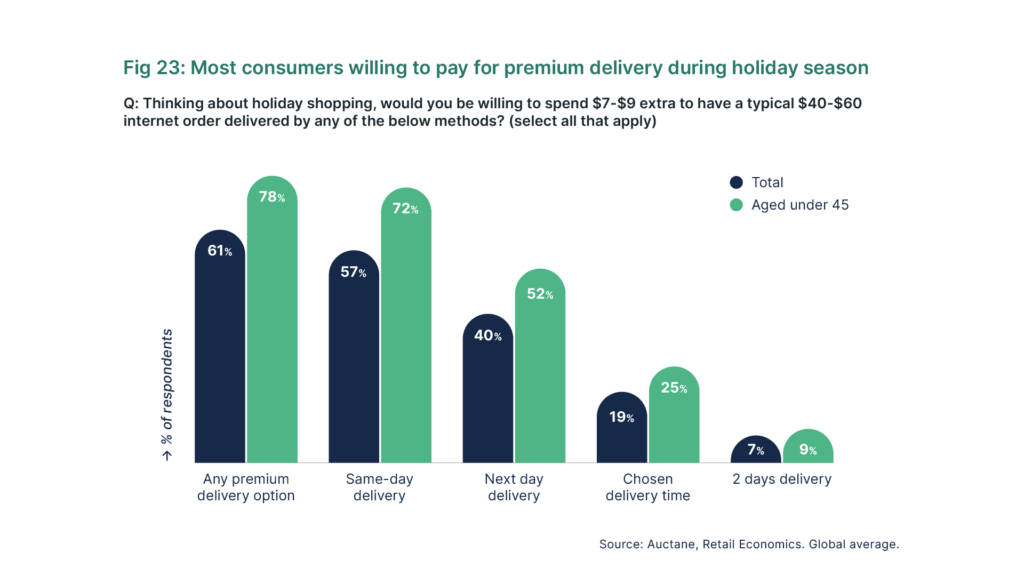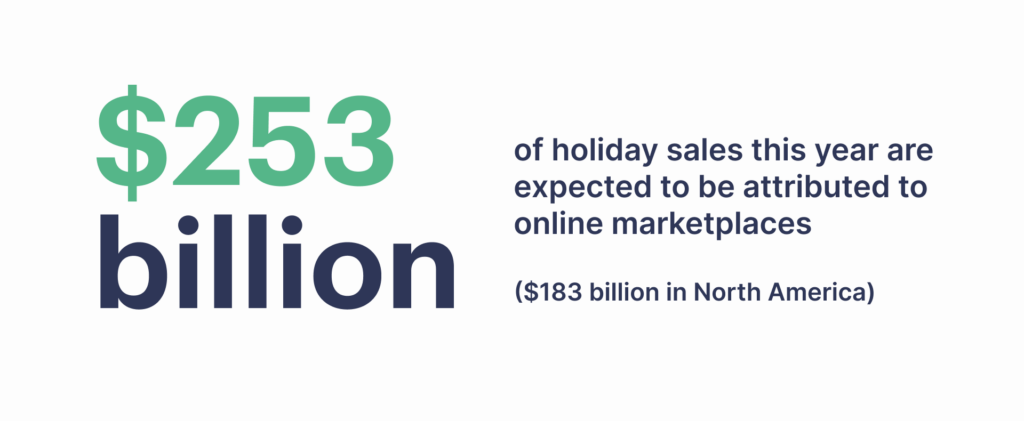Holiday Shopping Trends Report for 2023

ShipStation, in conjunction with Retail Economics, has created your guide to holiday shopping trends for the 2023 holiday shopping season. With insight from over 8,000 shoppers and merchants from major markets across the globe, this research study will help you understand the preferences of ecommerce shoppers. North American consumers plan to spend $182.9B on over the holiday season. This is a much higher per capita spending than other geos like Australia and Europe. Merchants have an opportunity to increase sales through ecommerce this year if they can provide the experience shoppers expect. 60% of shoppers anticipate doing a majority of their shopping online. So, creating an effective selling and fulfillment strategy can help retailers stay ahead of the competition.
While forecasting looks good, buying habits continue to evolve and reshape. The major takeaways that we found are that customers have a longer holiday shopping season, they want more express delivery options, and they’re ordering from marketplaces more than years past. This is in contrast to previous years when supply chain delays and shuttering businesses led customers to accept longer fulfillment and delivery times from independent, smaller retailers. But as manufacturing continues to ramp up and inflation lingers, customers are more willing to hunt for bargains. Customers also expect express delivery options at affordable prices over the long-preferred standard, free options. Our report dives into what is influencing these trends, where opportunities for success are, and how other merchants are capitalizing on them.
Shoppers Ready for Extended Bargain Hunting
The holiday shopping season may begin on Black Friday, but businesses and consumers start well before then. Sales events like Amazon Prime Day Early Access kick off the holiday shopping season with promotions starting in October. Additionally, customers aren’t only starting to shop sooner, they continue to shop longer. Many retailers and marketplaces continue having holiday sales into December. This extended buying period has customers trained to be more cautious. Shopping around has made them more cost-conscious and more aware of delivery costs and shipping times. Because a longer holiday shopping season is the norm, merchants that aren’t selling where customers are shopping may find themselves out in the cold come winter.

Be Ready for Marketplace Shoppers
Buying from a well-known marketplace provides customers with a greater sense of security. This convenience attracts 68% of global shoppers to places like Amazon over other online sales channels. Marketplaces are popular due to a number of factors including delivery speed (standard, 2-day delivery) and flexible returns. Membership perks like Amazon Prime provide additional cost savings, quicker deliveries, and other incentives that keep shoppers coming back.
Unlike shoppers, merchants selling on marketplaces may have a less rosy outlook. There can be rigid guidelines, tight profit margins, and customer-leaning refund policies that can cut into their bottom line. Fulfillment and shipping costs can become a pain point for marketplace sellers, but platforms like ShipStation provide streamlined, affordable shipping solutions for anywhere you sell. However, marketplaces do have advantages for sellers. Due to their consumer popularity, listing a product on Amazon or Walmart can do more for advertising and brand awareness than a TV commercial. In fact, the majority of merchants (53%) sell on marketplaces because they want to reach a broader customer base. While there are more online stores than you can count, there are only a handful of major marketplaces. And half of all online holiday orders will be through a marketplace in 2023.

Delivery Options Matter
Free delivery drives a lot of online sales—but it’s by no means the only winning tactic. Premium shipping options provide buyers with peace of mind and quicker delivery times. This comes in handy during the holiday season when shoppers have heightened concerns about timely, secure delivery. This is especially true the closer we get to holiday shipping deadlines. With porch pirates and delivery delays on the rise during the holiday season, Americans’ major holiday shipping concern is lost or stolen packages. Shoppers in other countries are more concerned with on-time delivery and cost of delivery during the holiday season. Security is less of a concern in other countries where PUDO (pick up, drop off) delivery options are much more common. Retailers have options to provide shoppers with delivery security, though.
Express delivery can soothe customer concerns, particularly for last-minute shoppers. Shoppers are also willing to pay for premium delivery options. Our survey found that a significant majority of consumers (61%) are willing to pay up to $9 extra for services such as same-day, next-day, or premium delivery during the holiday season. Willingness to pay rises to as high as 78% among individuals under 45 (Millennials and Gen Z) – the most commercially significant consumer demographic for online retail. Because this price may not cover the full cost of shipping—particularly for premium delivery options, affordable shipping is key. This again is where ShipStation can help.

Let ShipStation Help With the Holiday Rush
Gearing up for the holiday rush doesn’t have to be stressful. ShipStation gives you the tools you need to stay on top of order volume, cater to customer demands, and keep your business ahead of the competition. Regardless of where you sell your products, we provide direct integrations to 100s of selling channels, shipping discounts of up to 89% off, and advanced fulfillment automation that takes the guessworks and extra manual work out of printing shipping labels and packing orders. ShipStation helps you get through the holiday season, into next year, and scales with your business for everything else down the road.



